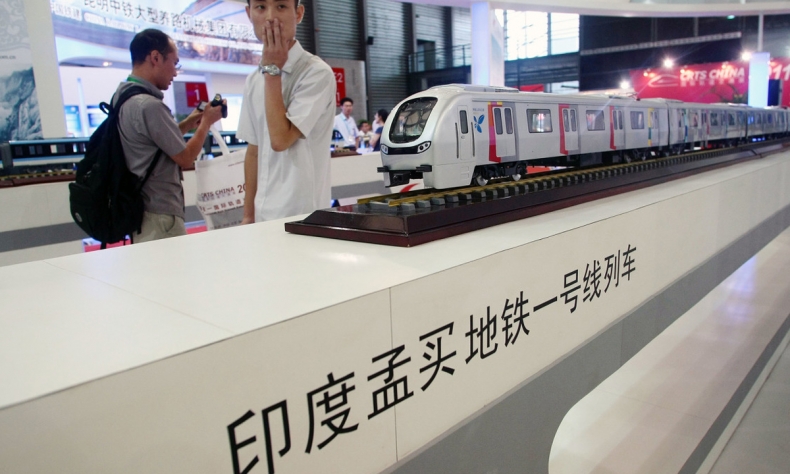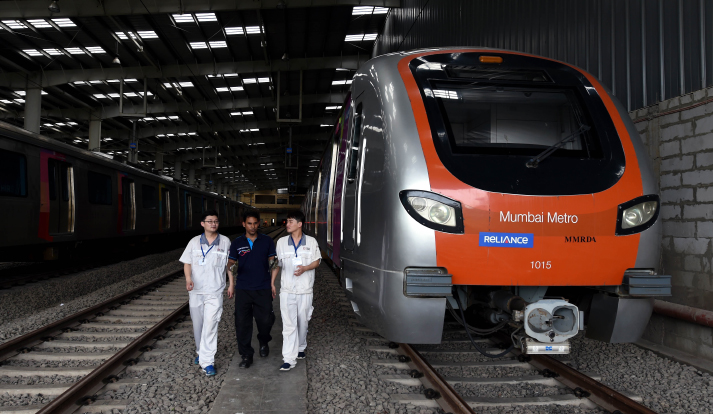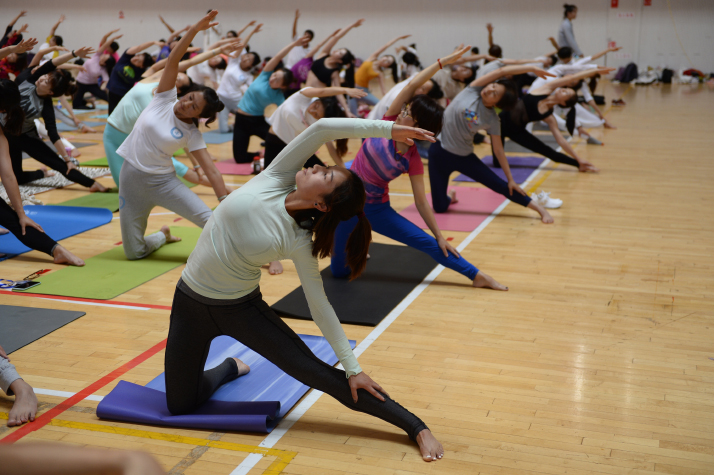
Building an Asian Century
Experts say China and India should cooperate more to realize the anticipation
A true Asian century would come only if China, India and other neighboring countries developed, late Chinese leader Deng Xiaoping once said. Jawaharlal Nehru, the first prime minister of India, also stressed that when India and China came together, it would be a big event for Asia, and even the world.
The geopolitical and economic center of the world has been shifting to Asia and the Asia-Pacific region in the past 30 years. Many have called the 21st century the Asian century, a historic passing of the baton from the West to the East.
“We are getting closer than ever to an Asian century with the development of China and India, an important phenomenon of the collective rise of emerging countries, but its significance goes far beyond the two countries,” Rong Ying, a senior researcher at the China Institute of International Studies, said at the World Peace Forum, an annual event organized by Tsinghua University to promote peace-building through dialogue, exchange and concrete action, in Beijing.
Ashok Kantha, Director of the Delhi-based Institute of Chinese Studies, echoed Rong, saying it is debatable if the world could really enter an Asian age or an Asian century without the joint efforts of China and India, the two countries with the largest population and a mission to maintain peace and stability in the region and achieve its prosperity and rejuvenation.
If the two neighbors choose not to cooperate, they may prevent the Asian century from coming into being. So measures should be taken by both to put China-India relations on a better and more fruitful track, the former diplomat added.

Deepening Mutual Trust
China and India have long-standing and deep-seated problems and in the past decades, have met with some structural challenges as well. India is facing a stronger and more confident China and is itself, under Prime Minister Narendra Modi’s leadership, equally ambitious. In addition, frictions in China-U.S. relations also affect China-India relations, Kantha said, adding that a new vision for mutual trust is needed to address the challenges.
Wei Wei, former Chinese Ambassador to India, shared the same view. According to Wei, the two countries have not yet established enough political mutual trust largely due to the long-existing border issue, which cannot be avoided but needs to be addressed correctly.
The 21st meeting of the Special Representatives of China and India on the Boundary Question was held in Chengdu, southwest China’s Sichuan Province, on November 24. It was the first meeting of its kind since Chinese President Xi Jinping and Modi met in Wuhan City in central China’s Hubei Province last year for in-depth communication, which created a new model of high-level exchanges between the two countries.
The special representatives’ meeting agreed that the Working Mechanism of Consultation and Coordination on China-India Border Affairs would start consultations to review the suggestions made by the two countries, study the areas and items on which agreements were reached, and create conditions to enable a final settlement of the boundary question.
In addition, new agendas to address regional and international issues, such as climate change, reform of the World Trade Organization, food security and cyber security, should be established between the two sides, Kantha said. Now that the U.S. is dragging its feet on its responsibilities, China and India should undertake their responsibilities as major countries. They need closer cooperation in such fields as e-commerce, data transfer and scientific innovation, since there are a lot of common interests in many areas.
Wei said the two countries should not wait to build strategic mutual trust; instead, they should have more substantive cooperation in broader areas to build up mutual trust at the technical level first and resolve issues concerned before reaching political mutual trust at the strategic level.

More Bilateral Cooperation
Today, Asia is at the heart of the action for trade liberalization. After the U.S. abandoned the Trans-Pacific Partnership, it was rescued by the other partners and revised into the Comprehensive and Progressive Agreement for Trans-Pacific Partnership, which came into force in December, 2018. Currently, talks on the Regional Comprehensive Economic Partnership, with its strong Asian participation and absence of the U.S., are progressing. These agreements will evolve and are likely to attract more members, offering a flexible, multi-track path to economic integration in Asia.
China and India have a combined population of over 2.5 billion. But their trade and investment potential needs to be realized. According to a research report on the 21st-Century Maritime Silk Road published by the Maritime Silk Road Institute, Huaqiao University in May, by the end of March 2018, India had invested in over 1,600 projects in China, with a total investment of only $861 million. The stock of China’s non-financial outbound direct investment in India stood at $3.46 billion. Compared with the size of the two economies, the potential of bilateral cooperation is far from being tapped.
There are great opportunities, which might bring about challenges as well as cooperation, according to Rudra Chaudhuri, Director of Carnegie India, an international center of the U.S. think tank Carnegie Endowment for International Peace.
India’s hesitant attitude toward the Belt and Road Initiative is not entirely out of geopolitical concerns, but also has something to do with the initiative’s standards, Chaudhuri said. While pushing ahead with Belt and Road construction, there may be problems concerning the legal system and other standards. If uniform standards are set, it might offer India an opportunity to cooperate.
Kantha agreed that the Belt and Road Initiative could be a choice for cooperation between the two neighbors. The two countries have shown their ability to cooperate effectively in the Asian Infrastructure Investment Bank (AIIB), where India has become the second largest investor after China. New areas of cooperation in China-India relations need to be developed in the future.
As major countries, China and India share the responsibility to lead common development in Asia. This also meets the development needs of both countries, Rong said. Countries in the region are in different stages of development, facing a variety of problems. China and India, through deepening bilateral cooperation, could become cooperative partners for growth and jointly promote regional prosperity and revitalization, he added.
While historical interactions between China and India can be documented over 2,000 years ago, unfortunately, in this age of the development of information and communication technology, the level of mutual understanding between their people is still very limited, leading to a huge cognitive gap. Also, some media tend to project the two as rivals who fought a border war, exaggerating the threat theory while ignoring the numerous areas where the two countries are cooperating extensively.
“By promoting closer bilateral cooperation, we will not only bring our interests closer together, but more importantly, bring our hearts together,” Rong said. The China-India High-Level People-to-People and Cultural Exchanges Mechanism established in 2018 could serve as a priority in bilateral cooperation in the next stage and boost people-to-people exchanges and promote mutual understanding, he said.
 Facebook
Facebook
 Twitter
Twitter
 Linkedin
Linkedin
 Google +
Google +










